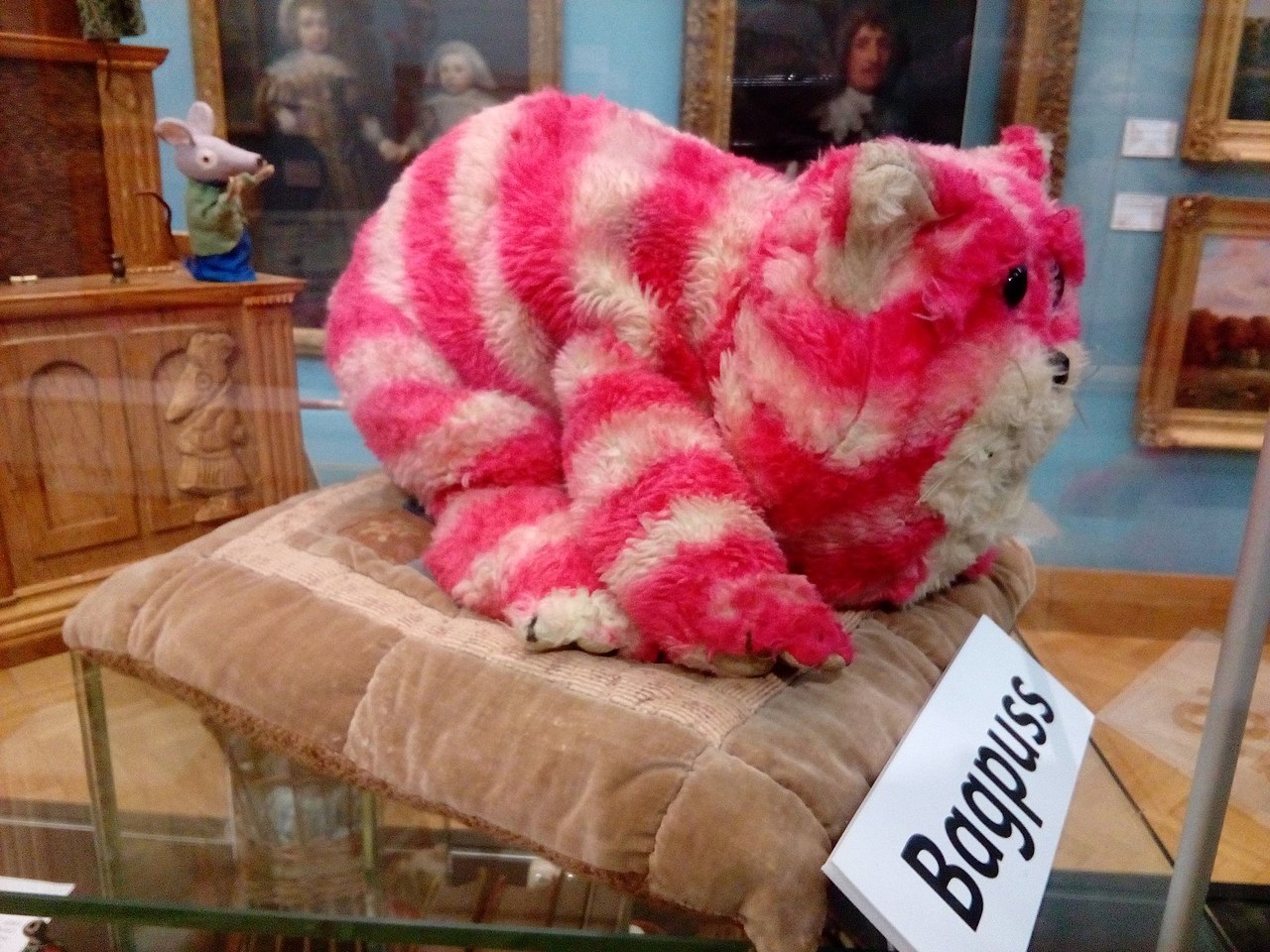Bagpuss is a British children’s television series, made by Peter Firmin and Oliver Postgate through their company Smallfilms. The first of the 13 weekly episodes was broadcast on 12 February 1974,[1] and the series was repeated 27 times until 1987.[2] The title character is “a saggy, old cloth cat, baggy, and a bit loose at the seams”.[3] Each episode was made using stop-frame animation;[4] Oliver Postgate wrote the stories, and Peter Firmin created the puppets.[5]
Wikimedia Commons
The title sequence is set at the turn of the 20th century, with Emily Firmin (Peter Firmin’s daughter) playing the part of the Victorian child Emily,[6] the owner of the rather unusual shop in which Bagpuss and his friends live. The opening antique village vignette is a cropped image of Horrabridge in West Devon, taken in 1898;[7] the shop window was at the Firmin family home in Blean, Kent.[8]
In 1999 Bagpuss topped a BBC poll for the UK’s favourite children’s television programme.[3]
Format

Wikimedia Commons
Emily was the owner of a shop named Bagpuss & Co, a rather unusual establishment where nothing was ever for sale. Instead, Emily found lost and broken things and displayed them in the window, so their owners could come and collect them.[9] She would leave whatever she had collected – a broken statue, a rusty tin bucket or a broken necklace among other things[5] – in front of her favourite stuffed toy, the large, saggy, pink and white striped cat named Bagpuss, and recite the following verse:
Old Fat Furry Catpuss
Wake up and look at this thing that I bring
Wake up, be bright, be golden and light
Bagpuss, oh hear what I sing
Emily then left the shop, Bagpuss woke up, the programme shifted from sepia to colour stop-motion film, and various toys in the shop came to life: Gabriel the toad, Madeleine the rag doll, the wooden woodpecker bookend which became the drily acerbic Professor Yaffle, and the mice carved on the side of the “mouse organ” – a small mechanical pipe organ that played rolls of music – woke up and scurried around, singing in high-pitched voices.
The toys discussed what the new object was. Someone, usually Madeleine, would tell a story related to the object, shown in an animated thought bubble over Bagpuss’s head. Often it would be accompanied by a song, accompanied by Gabriel on the banjo, and then the mice, singing in high-pitched squeaky harmony to the tune of Sumer Is Icumen In as they worked to repair the object; Professor Yaffle’s main contribution to the effort was to constantly find fault with the playful mice. The newly mended thing was then placed in the shop window, so that whoever had lost it would see it as they went past, and could come in and claim it. Then Bagpuss would start yawning again, and as he fell asleep the narrator would speak as the colour faded to sepia, and they all became toys again:
Bagpuss gave a big yawn and settled down to sleep
And, of course, when Bagpuss goes to sleep,
All his friends go to sleep too.
The mice were ornaments on the mouse organ.
Gabriel and Madeleine were just dolls.
And Professor Yaffle was a carved, wooden bookend in the shape of a woodpecker.
Even Bagpuss himself, once he was asleep, was just an old, saggy cloth cat,
Baggy, and a bit loose at the seams,
But Emily loved him.
